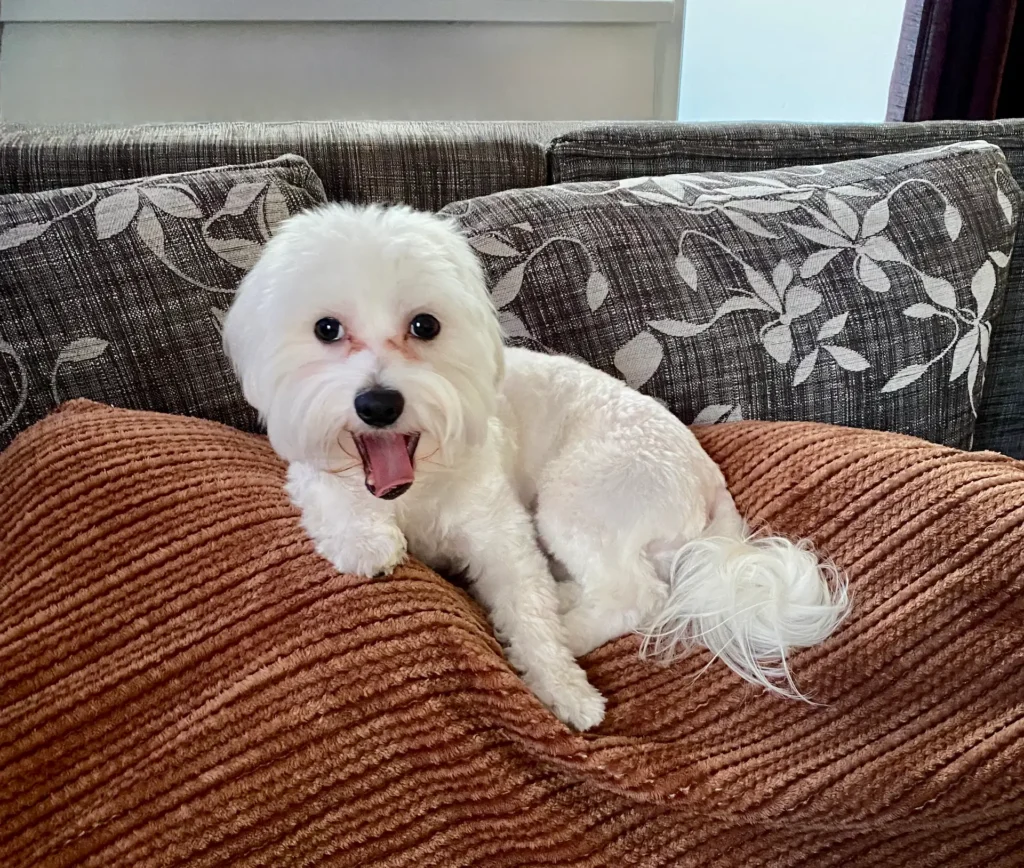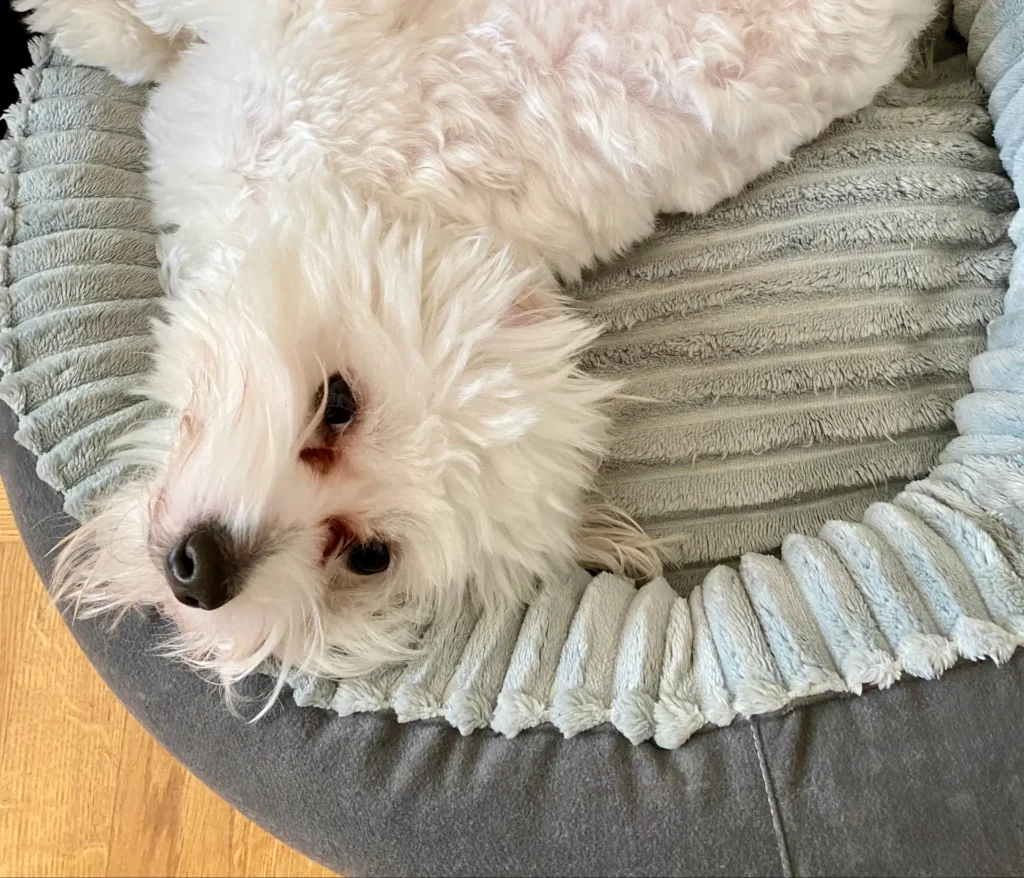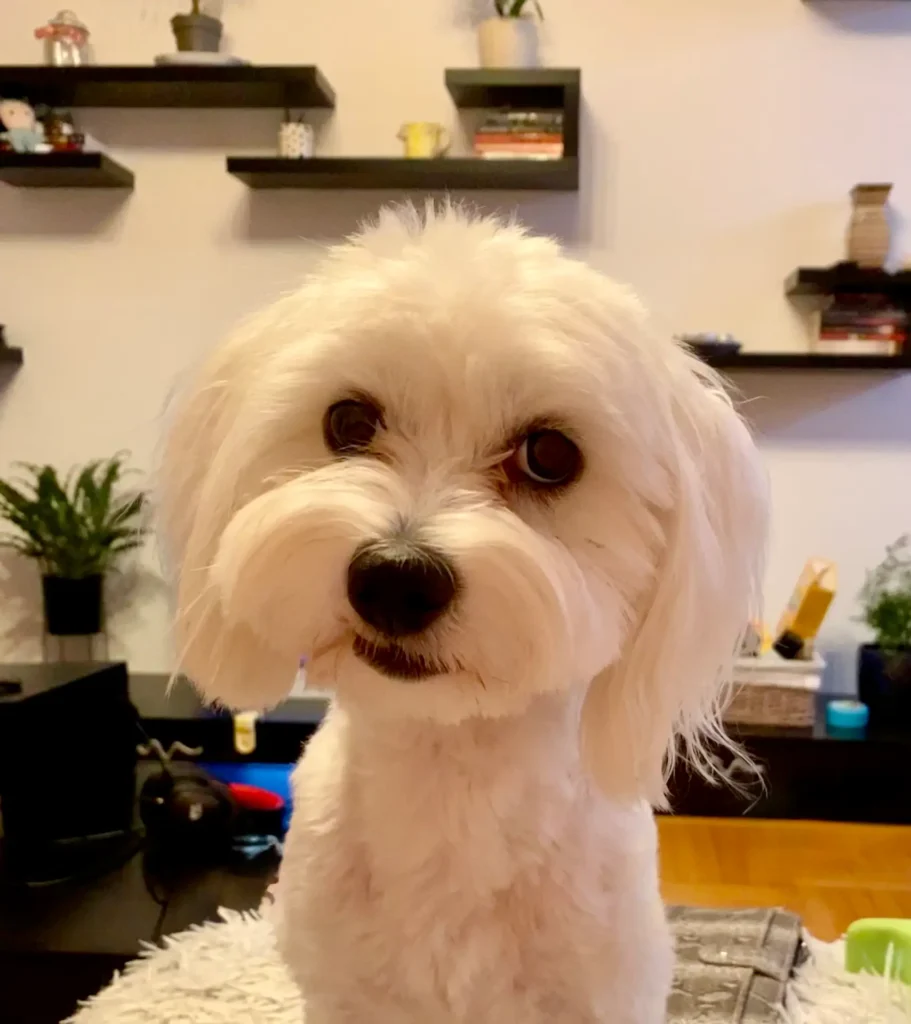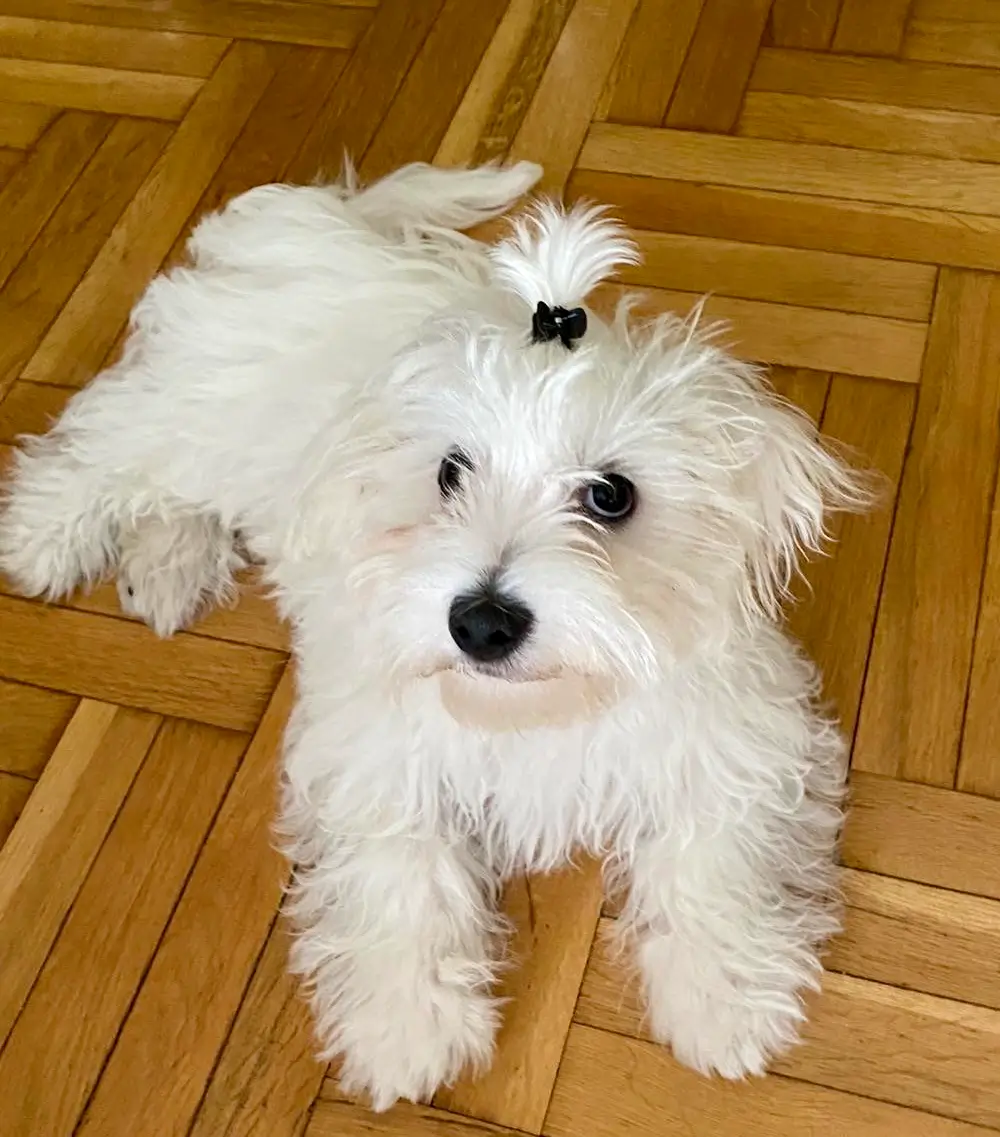Are you mesmerized by the snow-white, flowing coat of a Maltese but find it impossible to keep it as pristine and tangle-free as the ones on magazine covers? Get ready to unravel every secret to achieving and maintaining that show-dog look—because with the right approach, products, and habits, you can keep your Maltese dazzlingly white and silky without daily battles or stress.
Understanding the Maltese Coat

The Maltese is renowned for its long, bright-white, silky coat. Unlike many breeds, the Maltese has hair rather than fur, and it lacks an undercoat. This makes Maltese hair more similar to human hair: fine, soft, and highly prone to tangling and matting. While these dogs are low shedders, their white coat can quickly reveal stains, dirt, and knots if not properly cared for. Keeping the coat white and tangle-free is, therefore, a central responsibility for every Maltese owner.
Why the Maltese Coat Discolors and Tangles

The pure white coat of a Maltese is a blank canvas for all of life’s little stains and snags. Environmental factors, such as dirt, pollen, food spills, and even your dog’s natural tears and saliva, can cause gradual discoloration. Meanwhile, the coat’s fine and long-textured hair is highly susceptible to knots and mats—especially without regular grooming.
- Tear stains: The most common culprit, showing up as reddish-brown marks beneath the eyes.
- Saliva stains: Around the mouth, due to licking or wet food.
- Environmental stains: Grass, mud, dust, and even tap water minerals can dull the snow-white coat.
- Tangling and matting: Caused by lack of brushing, friction from harnesses, or getting wet and not being brushed out.
Essential Tools for Maltese Grooming
Collecting the right grooming tools is half the battle to a beautiful coat. Here’s what every Maltese owner should have on hand:
- Wide-tooth comb: Great for initial detangling and works well on both wet and dry hair.
- Slicker brush: Ideal for smoothing and removing small mats.
- Pin brush: For longer coats, helps maintain silkiness and remove loose hairs.
- Detangling spray or leave-in conditioner: Makes brushing easier and helps prevent breakage.
- Quality, dog-specific whitening shampoo and conditioner: To keep the coat bright and soft.
- Dog hairdryer with cool setting: For gently drying after bath time.
- Blunt-tipped scissors and grooming clippers: For safe trimming around sensitive areas.
- Tear stain remover: Specifically formulated for delicate Maltese skin around the eyes.
- Nail trimmers or grinders: To keep nails short and safe.
The Daily Routine: Brushing and Detangling
Daily brushing is the single most important practice for a tangle-free, clean-looking Maltese. Even a short, “puppy cut” coat benefits from frequent attention, but a long show coat demands thorough, gentle daily brushing.
- Step 1: Mist the Coat
Lightly spray with a detangling or conditioning mist. This reduces breakage and makes brushing smoother. - Step 2: Start with a Wide-Tooth Comb
Begin at the bottom (paws) and work upward, section by section. Be gentle to avoid pulling and hurting the skin. - Step 3: Slicker Brush
Follow up with a slicker brush, using short, gentle strokes along the grain of the hair. Always check problem areas—behind the ears, under the legs, and the tail base. - Step 4: Pin Brush for Final Touch
Use a pin brush for the remaining length to keep the hair sleek and distribute natural oils.
If you encounter a tangle, separate it gently with your fingers first, applying a bit more detangling spray if needed. For stubborn mats, try working from the outer edge inward, never yanking or ripping at the hair.
Bathing Your Maltese for a Bright White Coat

While it’s tempting to bathe your Maltese often, overbathing can strip essential oils and dry out the skin. For most adult Maltese, bathing every 3–4 weeks works well, unless your dog gets especially dirty.
- Step 1: Prep and Brush
Brush out all tangles before the bath. Water will make mats worse! - Step 2: Use Lukewarm Water
Extreme temperatures irritate the skin and dull the coat. - Step 3: Apply Whitening Shampoo
Massage a gentle, dog-specific whitening shampoo into the coat, avoiding the eyes. Let it sit for a minute to work on deep stains. - Step 4: Rinse Thoroughly
Any leftover shampoo can irritate or dull the hair. - Step 5: Use Conditioner
Apply a lightweight conditioner, focusing on the ends. Leave in for a couple of minutes before rinsing. - Step 6: Towel and Blow Dry
Pat with a towel—don’t rub—to avoid tangling. Finish drying with a dog hairdryer on cool, brushing as you go to prevent new mats.
If your Maltese has tear, saliva, or urine stains, pay extra attention to those areas. You can also use special whitening/cleansing wipes for spot cleaning between baths.
Whitening Techniques and Tips
To achieve that “as white as snow” appearance, combine regular grooming with specialized whitening products and stain prevention techniques:
- Use Whitening Shampoos and Conditioners: Look for dog-safe products that contain blue or purple pigments or optical brighteners to enhance white fur. Avoid harsh bleaches or human shampoos.
- Spot Cleansing: Use pet-safe cleansing wipes or a damp cloth for quick clean-ups after walks or meals. Be attentive after bathroom breaks as urine stains can develop quickly.
- Tear Stain Removers: Apply products formulated for the Maltese—never use hydrogen peroxide, which can be harsh. Maintain the area below the eyes daily for best results.
- Filtered Water: Using filtered or distilled water for drinking can help reduce mineral-related staining around the mouth and face.
- Diet Matters: High-quality, grain-free food and treats can minimize saliva staining and improve overall coat health.
- Beware of Sunlight: Prolonged sun exposure can yellow a white coat. Limit sunbathing sessions and provide shade during walks.
Preventing Tangles and Mats
The fine nature of Maltese hair means that tangles can form rapidly—sometimes overnight. Prevention is much easier than trying to remove a full-blown mat.
- Daily Brushing: Consistent brushing distributes natural oils, keeps the hair smooth, and stops knots before they start.
- Proper Drying: After baths, ensure the coat is completely dry. Damp hair tangles far more easily.
- Trim Problem Areas: Keep hair shorter around the collar, armpits, and groin where friction occurs most.
- Use Detangling Spray: Apply before brushing or after getting wet. It acts as a barrier and makes combing easier.
- Clothing and Harnesses: Use soft, lined harnesses and avoid excessively tight clothing which can rub and tangle the coat.
Grooming Frequency and Schedule
Every Maltese coat needs a regular grooming routine. The exact frequency depends on the hair length and whether you prefer a long show coat or a practical puppy cut.
- Long Coat: Full brush-out daily. Bath every 3–4 weeks. Trims as needed.
- Puppy Cut: Brush every 2–3 days. Bath every 3–4 weeks. Clipping and trims every 6-8 weeks.
- Face, Feet, and Sanitary Areas: Wipe daily or as needed to keep clean and stain-free.
- Nail Trimming: Every 6 weeks or sooner, depending on wear.
- Ears: Check weekly, clean monthly to prevent wax build-up and irritation.
Create a grooming schedule and stick to it—consistency is key to a stunning, healthy coat.
Tackling Tear Stains and Facial Grooming
Tear stains are a common challenge for Maltese owners, resulting in reddish-brown tracks beneath the eyes that can be difficult to remove. Genetics, allergies, teething, and mineral-rich water all play roles here. Here’s how to manage them:
- Daily Wiping: Use a soft, damp cloth or specialized tear stain wipes to clean the area below the
eyes each morning and evening. - Keep Hair Trimmed: Regularly trim the hair around the eyes to prevent it from wicking tears onto
the skin. - Tear Stain Remover: Apply gentle, dog-specific products as directed. Stay consistent for several
weeks to see improvement. - Diet and Water: Switch to filtered water and consider a limited-ingredient diet if allergies or
sensitivities are suspected.
For facial grooming, use blunt-tipped scissors to carefully trim around the eyes, nose, and mouth. Keep your Maltese calm and reward with treats so each session is positive.
Bathing vs. Spot Cleaning: When to Do Each
Frequent full baths can dry out the coat and skin, but spot cleaning helps manage daily messes and targeted stains.
- Bathing: Every 3–4 weeks, or more often if your dog has gotten especially dirty.
- Spot Cleaning: After outdoor play, meal times, or when minor dirt appears; use a damp cloth or mild pet wipes.
- Paw Care: Wipe paws after walks to prevent bringing outside dirt and allergens indoors.
- Sanitary Area: Check and clean after bathroom trips to prevent urine stains.
Trimming and Haircuts

While many owners love the look of a flowing show coat, a shorter “puppy cut” can be a practical option—especially for busy families or active dogs.
- Show Coat: Requires daily brushing and frequent trims at home and with a professional groomer.
- Puppy Cut: Short all over (usually 1–2 inches in length), easier to maintain, yet still needs regular brushing and trims.
No matter the style, keep the hair around the eyes, mouth, and private areas neatly trimmed. Use safety scissors and take your time—better to do small trims frequently than try to cut too much at once.
Nail, Ear, and Paw Care
A full grooming routine for your Maltese should include more than just the coat. Don’t overlook:
- Nails: Trim every 4–6 weeks. If you hear clicking on hard floors, it’s time for a trim. Use a
grinder if you’re uncertain with clippers. - Ears: Clean inside the ears at least once a month using a vet-recommended ear cleaner, and check
for redness or odor weekly. - Paws: Keep fur between paw pads trimmed to prevent matting and slipping. Wipe after walks to
reduce dirt and allergens entering the home.
Diet, Hydration, and Supplements for a Healthy Coat
A Maltese’s outer beauty reflects its inner health. Nutrition and hydration are critical for a white, lustrous coat.
- Feed high-quality food: Look for natural, meat-first dog foods with limited fillers and
artificial dyes. Omega-3 and omega-6 fatty acids, like those in fish oil, support skin and coat health. - Offer clean, filtered water: Prevents mineral stains and keeps the skin hydrated.
- Consider supplements: If recommended by your vet, add coat-boosting supplements with biotin or
fish oil for extra shine and resilience. - Limit treats with dyes: Artificial colors can stain both the hair and cause tear stains.
Professional Grooming vs. DIY

A combination of at-home care and the occasional visit to a professional groomer is ideal for most Maltese owners.
- Professional Groomers: Provide deep cleaning, safe scissoring and clipping, and can help manage
difficult mats or stains. - At-Home Grooming: Essential for daily maintenance and between salon visits. Saves money and
strengthens the bond with your dog.
Groomers can also teach you safe techniques for brushing, trimming, and stain removal, and recommend the best products for your specific Maltese.
Traveling and Outdoor Tips for Maltese Coats
Going out with your Maltese means exposure to dirt, moisture, and sunlight—each a threat to that bright white coat.
- Carry wipes or a damp cloth: For quick cleanups after walks or playtime.
- Paw boots or vests: Prevent stains from mud or wet grass and keep the chest and legs cleaner.
- Limit sun exposure: Prolonged sun can cause yellowing of the hair.
- Pack a small brush and detangling spray: Tackle tangles before they become mats, especially after
a windy or rainy outing.
Common Mistakes to Avoid
- Overbathing: Strips essential oils and causes dry skin and dullness.
- Using human products: Even “gentle” human shampoos can upset your dog’s pH and harm the coat.
- Not brushing before a bath: Water tightens mats, making them even harder to remove.
- Ignoring paws and sanitary areas: These areas stain and mat easily if neglected.
- Skipping regular trims: Long hair around eyes, feet, and private areas can cause irritation and
hygiene problems.
Building Positive Grooming Habits
Patience and consistency are the foundation of successful Maltese grooming. Start slow, use treats, and always finish sessions with praise or play. Regular, stress-free grooming builds trust and makes every session easier as your Maltese learns to love the process.
Frequently Asked Questions on Maltese Grooming
How often should I bathe my Maltese?
A bath every 3–4 weeks is ideal, unless your dog is visibly dirty or has a skin condition that requires more frequent washing.
Can I use baby shampoo on my Maltese?
It’s best to avoid human shampoos, even baby shampoo. They’re not formulated for a dog’s skin pH and can lead to dryness and irritation.
What’s the best way to get rid of tear stains?
Daily wiping, keeping the area trimmed, using filtered water, and applying a gentle tear stain remover—consistently—deliver the best results.
What’s the difference between a pin brush and slicker brush?
A slicker brush is ideal for gently smoothing and removing loose mats. A pin brush is great for finishing and fluffing long, silky hair.
Should I leave grooming to the professionals?
Daily care is best handled at home, but professional groomers can help with difficult trims, safe stain removal, and show grooming.
Conclusion
Achieving and maintaining a brilliant, tangle-free Maltese coat is within every owner’s reach. With the right tools, a consistent schedule, and gentle, informed techniques, you can keep your companion looking radiant and feeling healthy. Embrace the grooming routine as a special bonding time—and enjoy every compliment your snow-white, silky Maltese receives!

Leave a Reply